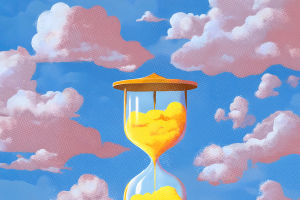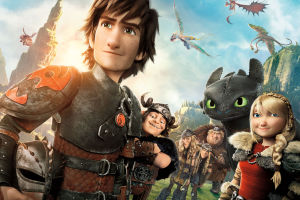Anime has become a global phenomenon, beloved by audiences around the world for its vibrant visuals, compelling narratives, and unique characters. But behind these modern animated creations lies a deep connection to traditional Japanese art forms.
From the delicate brushstrokes of calligraphy to the intricate patterns found in ukiyo-e woodblock prints, Japan's rich artistic heritage has played a pivotal role in shaping the aesthetics of anime.
This article explores how traditional Japanese art continues to shape anime's visual identity, from its color palettes to its sense of movement.
Traditional Japanese Art Forms: A Deep Well of Inspiration
Japan's traditional art forms are diverse and complex, each with its own distinctive style and historical significance. Some of the most important art forms that have influenced anime include ukiyo-e (woodblock prints), sumi-e (ink painting), kintsugi (golden repair), and Japanese calligraphy. These art forms emphasize harmony, nature, and attention to detail, all of which are integral to the visual language of anime.
Ukiyo-e prints, which flourished during the Edo period, are especially important when it comes to anime's visual style. Artists like Hokusai and Hiroshige were masters of capturing the beauty of landscapes, nature, and daily life in a distinctive, stylized manner. The bold outlines and flat colors of ukiyo-e prints echo in anime character designs and backgrounds, where vibrant hues and clearly defined shapes are used to convey emotion and atmosphere.
The Role of Ukiyo-e in Shaping Anime Visuals
The ukiyo-e style has had a profound impact on the way anime is drawn and animated. One of the most significant influences is the use of dynamic composition. In ukiyo-e, scenes are often framed in a way that leads the viewer's eye through the image, guiding them to focus on specific elements such as the main character or an important object. This framing technique is often used in anime to create a sense of drama and movement, making even still images feel dynamic.
Another key aspect of ukiyo-e that translates into anime is the use of vibrant, flat colors. Ukiyo-e artists employed bold color choices to create emotional impact, and this same approach is found in anime. The use of bright, contrasting colors is a hallmark of many iconic anime series, from the bright reds of Naruto to the rich blues of Neon Genesis Evangelion. These colors are not just visually striking but are used to convey emotional tones and underscore the mood of the scene.
Sumi-e and Its Influence on Animation Backgrounds
Sumi-e, the Japanese style of ink painting, is another traditional art form that has shaped the overall aesthetic of anime. Known for its simplicity, elegance, and use of brushstrokes to depict the natural world, sumi-e has influenced the way anime backgrounds are created. The technique emphasizes minimalism and the beauty of empty space, often using sweeping brushstrokes to evoke the essence of landscapes and nature.
In anime, this influence is evident in the tranquil, serene backgrounds of shows like Princess Mononoke and Spirited Away, where the natural world is depicted in a way that feels both magical and grounded. The soft, flowing lines of sumi-e are echoed in the way landscapes are designed, often with an emphasis on light, shadow, and movement within nature.
Japanese Calligraphy: From Brushstrokes to Movement
Japanese calligraphy, or shodo, is another traditional art form that has had a significant impact on the visual language of anime. The elegance of the brushstrokes and the fluidity of the characters in calligraphy are mirrored in the smooth, fluid animation styles of anime. Just as a calligrapher's brush movements flow with grace and precision, so too does the animation of characters, especially in action sequences where movement is essential to the storytelling.
The brushstrokes of calligraphy also influence character designs in anime. For example, the clean, fluid lines that characterize many anime characters' hair and clothing are reminiscent of the brushstrokes in calligraphy. The fluidity of movement, seen in the way characters interact with their environment, is a direct parallel to the fluid, rhythmic strokes of a calligrapher's brush.
Nature as a Central Theme in Both Traditional Art and Anime
One of the most significant influences of traditional Japanese art on anime is the emphasis on nature. In ukiyo-e, sumi-e, and even the practice of bonsai, nature is seen not only as a subject of beauty but also as a means of understanding human emotions and relationships. This deep connection to nature is evident in many anime series, where the natural world plays a central role in the narrative.
For instance, My Neighbor Totoro (1988) shows how nature is not just a backdrop but an active participant in the story. The lush forests and sprawling countryside play a key role in the characters' emotional journeys, reflecting themes of innocence, childhood, and the relationship between humans and the natural world. Similarly, in The Tale of the White Serpent (1956), nature is a powerful force that influences the destiny of the characters.
Influence of Kintsugi and Symbolism in Anime
Kintsugi, the Japanese art of repairing broken pottery with gold, adds another layer of meaning to anime's visual language. This concept of embracing imperfection and repairing what is broken can be seen in many anime storylines, where characters overcome adversity and grow stronger as a result. In a visual sense, the use of fragmented images or symbolic "repairs" in the animation often mirrors the philosophy of kintsugi.
The idea of "flaws" being integrated into the whole can be seen in many anime series, where the broken pasts or struggles of characters are not hidden but are integral to the development of the story. The visual representation of brokenness, with glowing or highlighted cracks, can be found in shows like Neon Genesis Evangelion and Attack on Titan, where the characters' emotional wounds are as important as their physical journeys.
The Future of Anime and Traditional Art
As anime continues to evolve, its ties to traditional Japanese art remain strong. While modern techniques such as CGI and digital painting have become more prevalent, the influence of traditional art forms continues to shape the visual language of anime. In fact, many contemporary anime creators actively seek to incorporate traditional artistic elements into their work, often blending them with new technology to create visually stunning experiences.
The future of anime will likely continue this trend, with more anime series and films drawing from the deep well of Japanese artistic tradition. Whether it's through the intricate brushstrokes of sumi-e or the boldness of ukiyo-e, the legacy of traditional Japanese art will undoubtedly continue to shape the way we experience anime well into the future.


